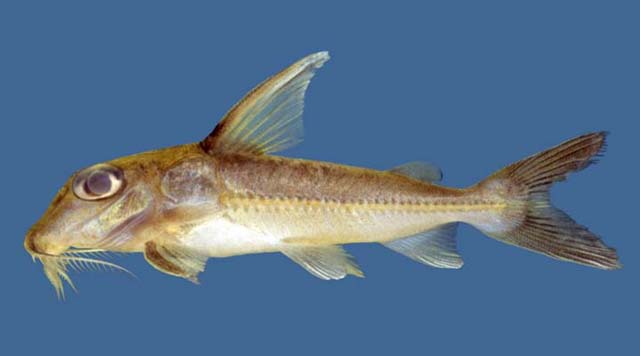| Doradidae (Thorny catfishes), subfamily: Doradinae |
| 30 cm SL (male/unsexed) |
|
demersal; freshwater; brackish |
| South America: Essequibo River basin and other coastal drainages east to mouth of Amazon River, possibly in lower Amazon and lower Orinoco River basins. Forms inhabiting lower Amazon and lower Orinoco are tentatively identified as Doras carinatus and may represent one or more undescribed species. |
|
Dorsal spines (total): 1-1; Dorsal soft rays (total): 6-6; Anal soft rays: 11-15. Body elongated, without scales but with a range of 33-35 spiny bony plaque which runs along the length of the lateral, starting from the extreme end of the caudal fin up to the point directly below the origin of the dorsal fin. Head is pointed and laterally compressed, its width being far less than its length. Eyes are high and are situated in the posterior half of the head. Mouth is inferior, provided with a pair of maxillary barbels branching into 12 or 13 branches and 4 short mandibular barbels. Adipose fin short |
| Can emit sounds by moving its pectoral spines. Every basic unit of sound emitted lasts for 60-70 millisecond, with a frequency of 60-90 Hertz corresponding to the reply frequency of the muscles utilized (Ref. 35381). |
|
Least Concern (LC); Date assessed: 15 February 2021 Ref. (130435)
|
| harmless |
Source and more info: www.fishbase.org. For personal, classroom, and other internal use only. Not for publication.
